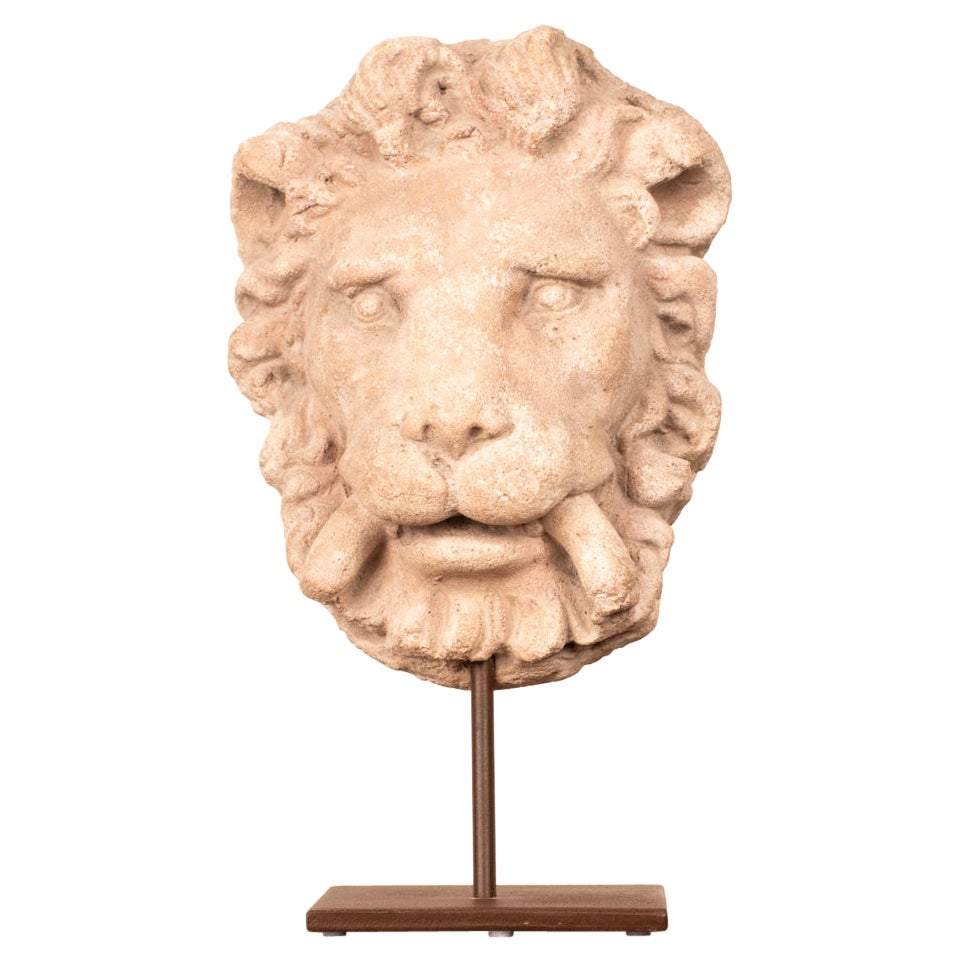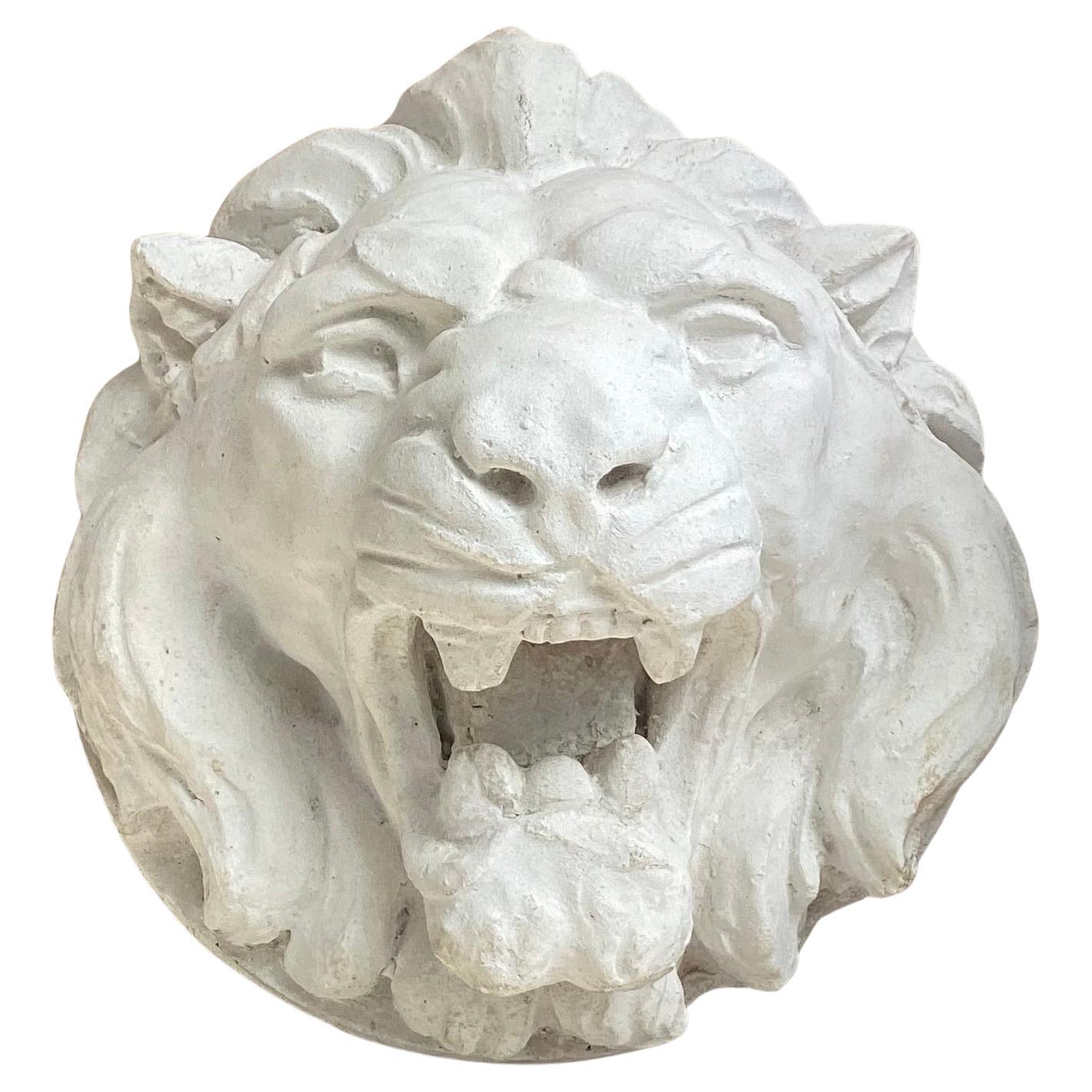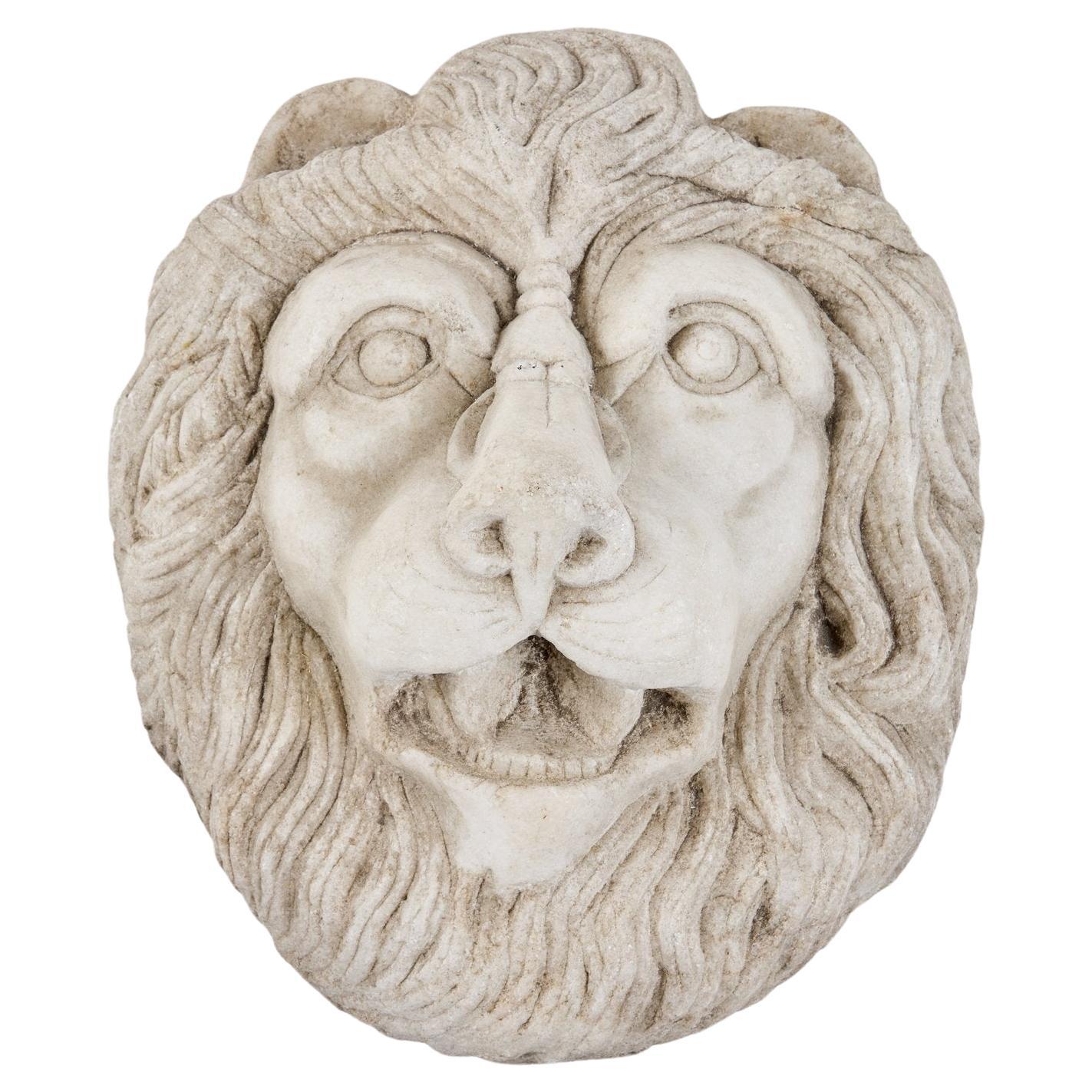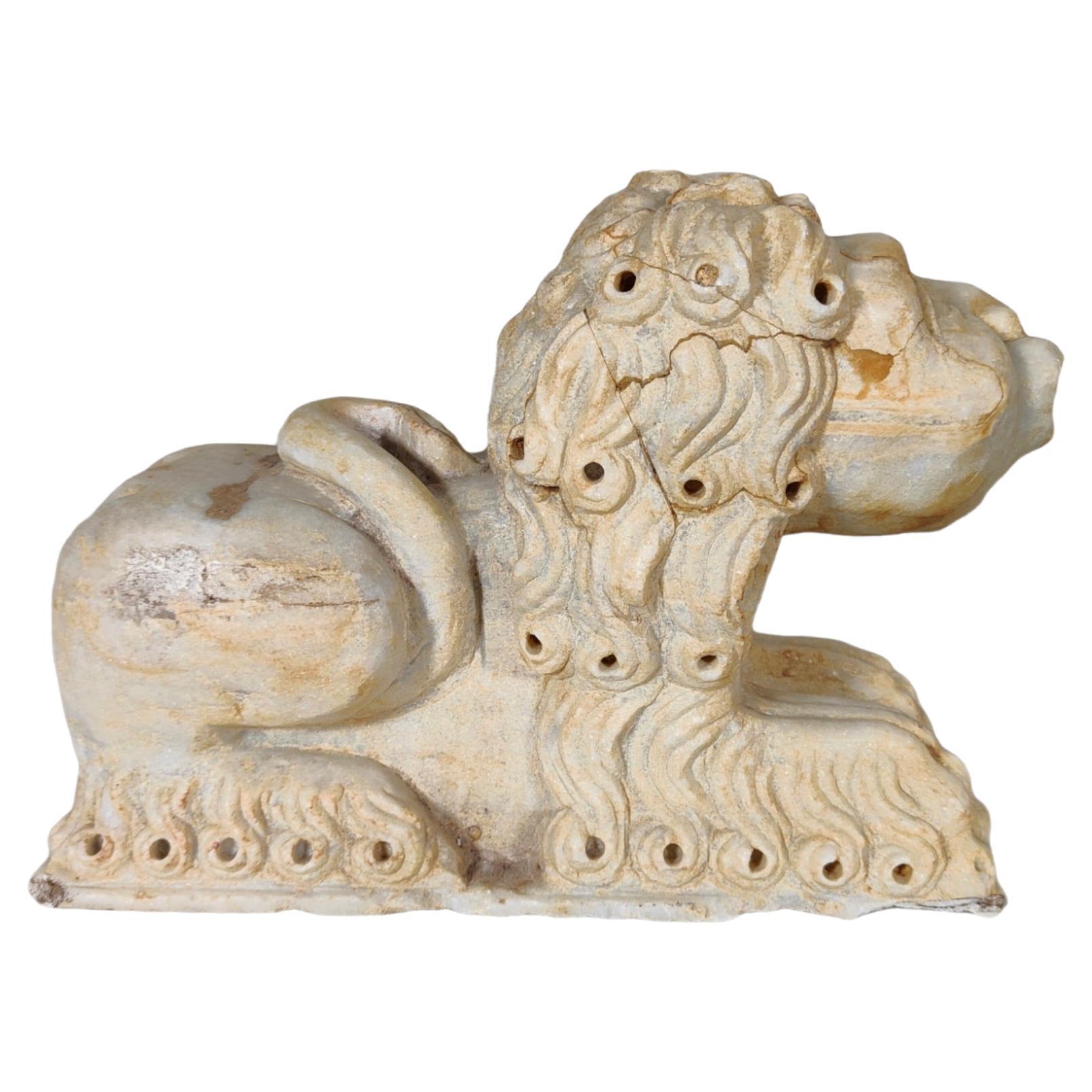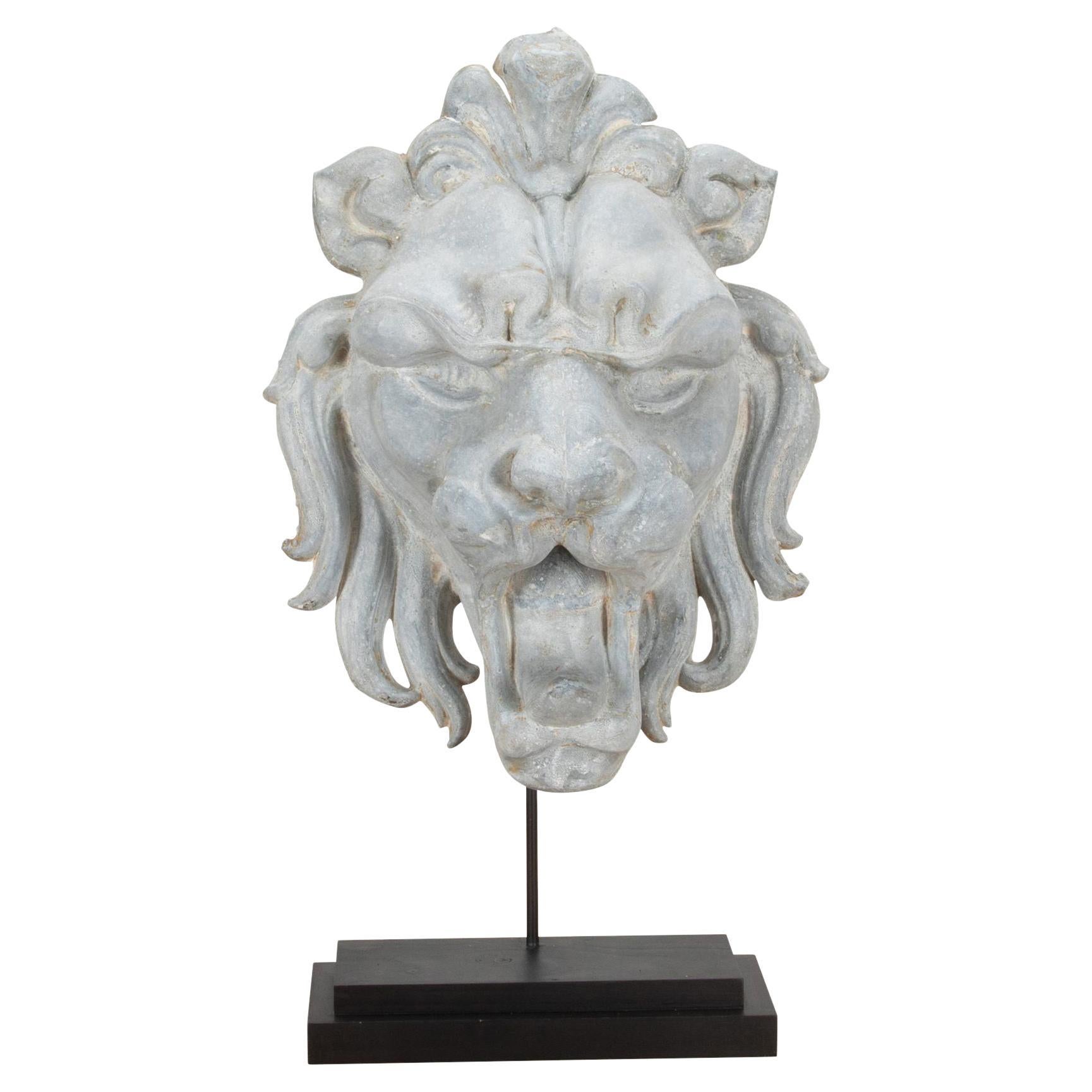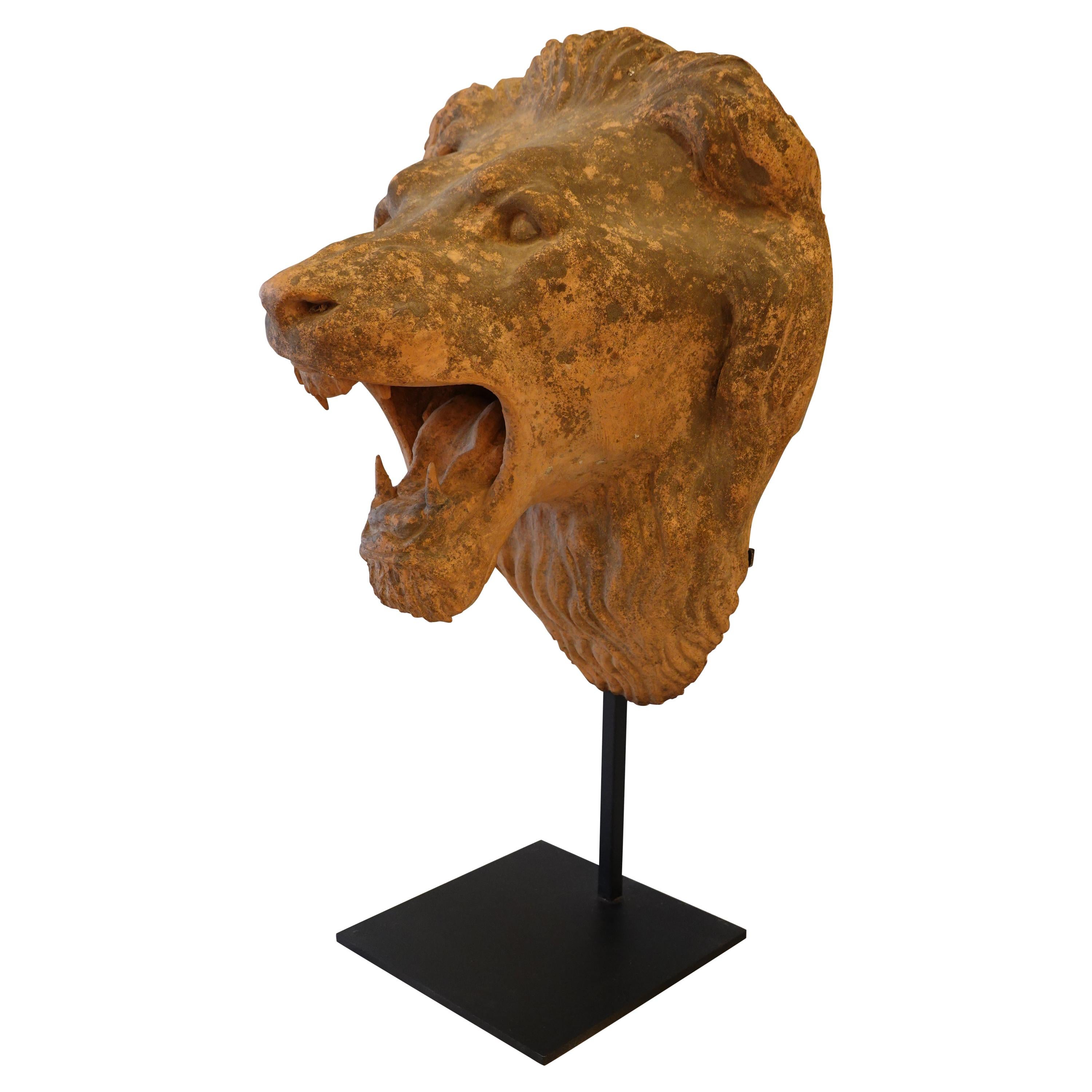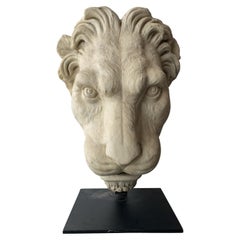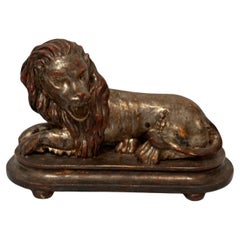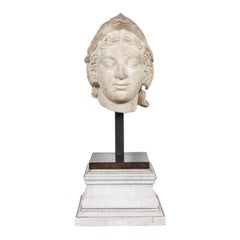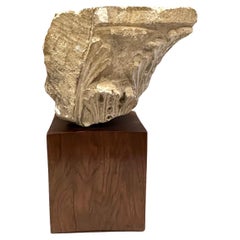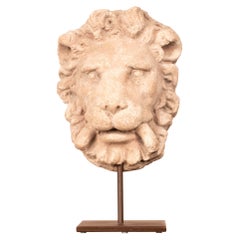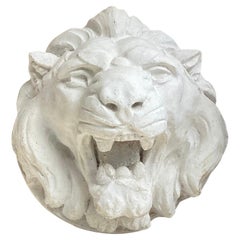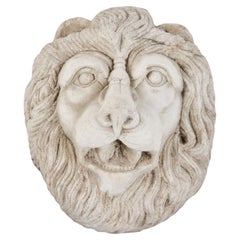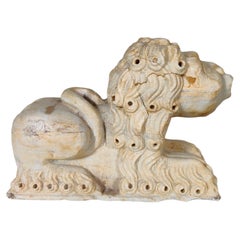Items Similar to 17th Century, Carrera Marble Lion Fountain Head
Want more images or videos?
Request additional images or videos from the seller
1 of 9
17th Century, Carrera Marble Lion Fountain Head
$27,500
£20,857
€23,955.09
CA$39,397.57
A$43,373.80
CHF 22,168.45
MX$517,678.01
NOK 282,251.61
SEK 264,124.58
DKK 178,930.59
About the Item
Stunning, solid white, Carrara marble lions head from a fountain in Florence featuring a flowing main and a fabulous patina. Mounted on a custom, iron base. The piece hails from the important private collection of beloved, Los Angeles philanthropist, Sir Daniel Donohue (1919-2014) who owned a string of legendary properties throughout southern California.
- Dimensions:Height: 24 in (60.96 cm)Diameter: 20 in (50.8 cm)
- Materials and Techniques:
- Place of Origin:
- Period:1600-1609
- Date of Manufacture:1600s
- Condition:Wear consistent with age and use. There is obvious wear consistent with its age.
- Seller Location:Los Angeles, CA
- Reference Number:1stDibs: 1108028539206
About the Seller
4.9
Vetted Professional Seller
Every seller passes strict standards for authenticity and reliability
Established in 2000
1stDibs seller since 2008
90 sales on 1stDibs
Typical response time: 1 hour
- ShippingRetrieving quote...Shipping from: Los Angeles, CA
- Return Policy
Authenticity Guarantee
In the unlikely event there’s an issue with an item’s authenticity, contact us within 1 year for a full refund. DetailsMoney-Back Guarantee
If your item is not as described, is damaged in transit, or does not arrive, contact us within 7 days for a full refund. Details24-Hour Cancellation
You have a 24-hour grace period in which to reconsider your purchase, with no questions asked.Vetted Professional Sellers
Our world-class sellers must adhere to strict standards for service and quality, maintaining the integrity of our listings.Price-Match Guarantee
If you find that a seller listed the same item for a lower price elsewhere, we’ll match it.Trusted Global Delivery
Our best-in-class carrier network provides specialized shipping options worldwide, including custom delivery.More From This Seller
View AllRoman Carrara Marble Lioness
Located in Los Angeles, CA
Magnificent hand carved Carrara marble sculpture of a lioness head from Rome. Mounted on a metal base. Base 13.75"W x 12.25"D.
Category
Antique 1650s Italian Neoclassical Animal Sculptures
Materials
Carrara Marble, Metal
$49,700
Silver Gilded Reclining Lion Sculpture
Located in Los Angeles, CA
Hand-carved and silver gilded reclining lion on attached footed base.
Category
Antique Late 19th Century Italian Animal Sculptures
Materials
Giltwood
Early 1600s, Marble Bust of Athena
Located in Los Angeles, CA
Exceptional, hand carved all the way around, 17th century, Carrara marble bust of Athena in a helmet surrounded by a laurel wreath. Fabulous expression,...
Category
Antique Early 1600s Italian Figurative Sculptures
Materials
Stone, Carrara Marble
19th Century Marble Capital Fragment Mounted on Wooden Base
Located in Los Angeles, CA
Hand-carved marble capital fragment mounted on a wooden base. Base: 9.5" W x 7.5"D.
Category
Antique 19th Century French Mounted Objects
Materials
Marble
18th c., Marble Cherub Fragment
Located in Los Angeles, CA
Hand-carved, Northern Italian, winged, marble cherub's head mounted on a custom, Lucite base.
Category
Antique 18th Century Italian Statues
Materials
Marble
$5,580 Sale Price
40% Off
Molded Gesso Sculpture of a Horse Head
Located in Los Angeles, CA
Molded gesso sculpture of the head of a horse on base that is 12" diameter.
Category
Vintage 1980s Italian Animal Sculptures
Materials
Gesso
$2,300 / item
You May Also Like
18th–19th Century Spanish Carved Stone Lion’s Head Wall Element
Located in Bonita Springs, FL
18th–19th Century Spanish Carved Stone Lion’s Head Wall Element
A powerful and expressive sculptural fragment depicting a lion’s head, originally part of a grand architectural ensemb...
Category
Antique 19th Century Spanish Neoclassical Figurative Sculptures
Materials
Stone, Metal
French Lion Mask Fountain Head Sculpture, Mounted on Iron Stand
Located in Bradenton, FL
French Lion Mask Fountain Head Sculpture, Mounted on Iron Stand. Lion head has great attention to detail featuring a nice flowing mane. White in color with a fabulous patina. Has han...
Category
Early 20th Century French Greco Roman Mounted Objects
Materials
Stone
Marble Lion
Located in Studio City, CA
Italian 19th century carved marble lion head for the garden. Measures Height: 16 in (40.64 cm)Width: 14 in (35.56 cm)Depth: 6 in (15.24 cm)
Category
Antique 1890s Italian Animal Sculptures
Materials
Marble
$1,800
12th Century Italian Roman Marble Lion
Located in Madrid, ES
Italian Romanesque 12th century marble recumbent lion
12th century Italian roman marble lion
with a stylized mane and tail wrapped around its body a...
Category
Antique 15th Century and Earlier Italian Gothic Animal Sculptures
Materials
Stone
Large French 19th Century Zinc Lion Head
Located in Tetbury, Gloucestershire
Large French 19th Century lion head in zinc. Once would have decorated a facade, with time weathered patina. Circa 1850. Measurements are inclusive of the wooden base.
Category
Antique 19th Century French Animal Sculptures
Materials
Zinc
French Terracotta Lion's Head on Custom Iron Stand
Located in Pembroke, MA
This French terracotta lion's mask was originally an element of a 19th century fountain with water jetting from its mouth. This garden piece is now mounted on a custom iron, making i...
Category
Antique Late 19th Century French Neoclassical Animal Sculptures
Materials
Iron
$5,800 Sale Price
20% Off
More Ways To Browse
Carrera Marble
Marble Lion
Marble Lions
Antique Lion Head Furniture
Lion Italian Sculpture
Lion Marble Sculpture
Carved Marble Head
Lion Head Sculpture
Marble Carved Lions
Italian Marble Lions
17th Century Lion
Marble Lion Head
Carrera Sculpture
Italian Carved Marble Lion
Lion Head Fountain
Marble Fountain Head
Marble Fountain Head Lion
Large Hand Sculpture
